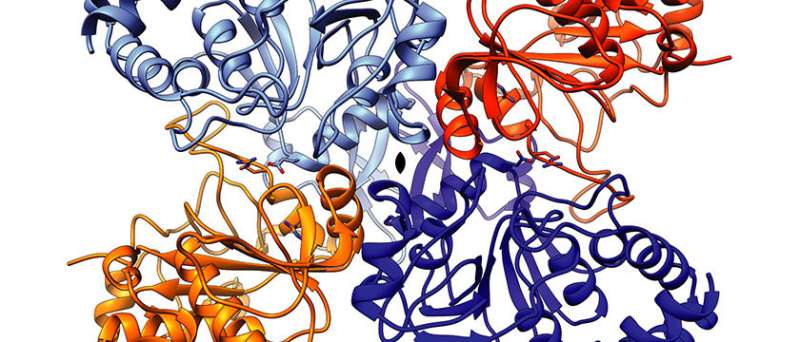Scientists break down tuberculosis structure

Scientists from the University of British Columbia have taken a crucial step towards starving out tuberculosis, following research into how the infection grows in the body.
Tuberculosis, a bacterial infection which generally affects the lungs, is a global threat; worldwide, it kills more people than HIV and malaria combined. In Canada, there are around 1,600 new cases of tuberculosis reported every year, with about 20 per cent of those cases affecting First Nations peoples, according to the Government of Canada. Researchers using the Canadian Light Source have investigated how the bacteria grow in lungs in an effort to better understand how tuberculosis can be treated.
Lindsay Eltis, a UBC professor of Microbiology and Immunology and Canada Research Chair in Microbial Catabolism and Biocatalysis, has spent the last 25 years studying bacteria and determining how they grow on different compounds. In 2007, Eltis' group discovered that tuberculosis bacteria grow on cholesterol and that this is important for causing disease.
"Many bacteria, like humans, grow using glucose, a type of sugar. They derive energy from it, converting it to water and carbon dioxide, and use it to make building blocks essential to life. The tuberculosis bacterium is a bit unusual in that it can grow on cholesterol, deriving energy and essential building blocks from it," explains Eltis. "This ability to grow on cholesterol helps the bacterium establish infection in our lungs."
However, simply knowing that the bacterium grows on cholesterol doesn't tell the researchers enough to be able to treat it. For that, they need to understand how exactly the bacterium breaks down cholesterol.
Cholesterol has 27 carbon atoms arranged into four rings, "and it's a little bit complicated," said Eltis. Eltis' group had already figured out how the bacterium breaks down the first two rings, and with this research, they looked into how tuberculosis bacteria break the last two rings open. The results were published in a recent issue of PNAS, the Proceedings of the National Academy of Sciences.
Using the Canadian Macromolecular Crystallography Facility at the CLS, Eltis and long time collaborator, UBC structural biology professor Natalie Strynadka, were able to determine the structure of the enzyme which helps the tuberculosis bacterium to break down those last two rings of the cholesterol molecule.
Understanding the structure of the enzymes, and how exactly they work, is crucial to developing drugs to treat diseases such as tuberculosis.
A better understanding of these enzymes can also help with the production of pharmaceutical molecules such as steroids, as bacteria could be modified to make use of the enzymes in order to take existing, less useful steroids and modify them into more useful forms.
Meanwhile, Eltis' research continues. Now that this enzyme has been identified, Eltis' group can examine other enzymes that might help the bacterium break down cholesterol, and they can look for small molecules to inhibit the carbohydrate-ring breaking enzymes in order to starve the bacteria and treat the infection.
More information: Adam M. Crowe et al. IpdAB, a virulence factor in Mycobacterium tuberculosis, is a cholesterol ring-cleaving hydrolase, Proceedings of the National Academy of Sciences (2018). DOI: 10.1073/pnas.1717015115
Journal information: Proceedings of the National Academy of Sciences
Provided by Canadian Light Source




















